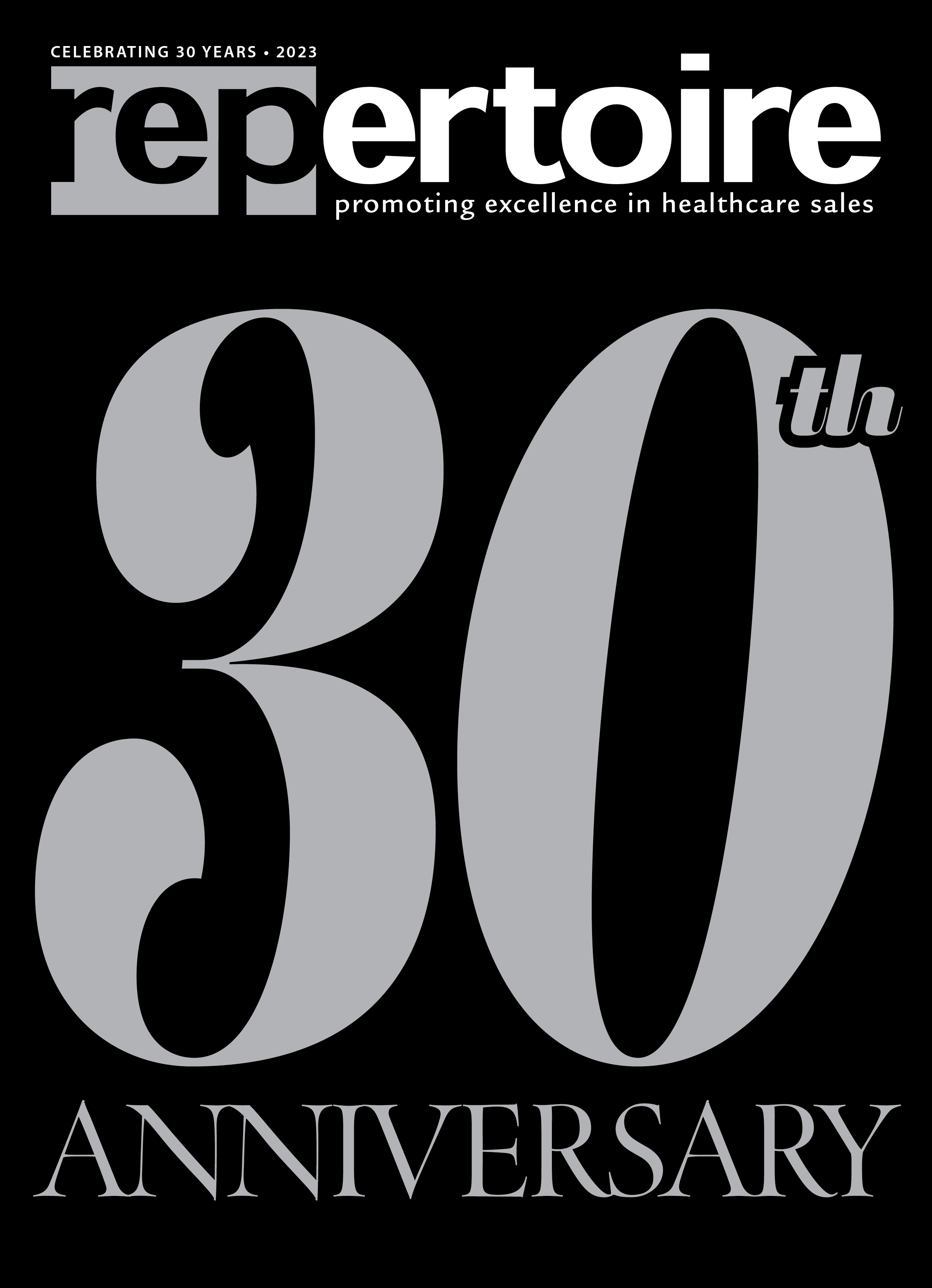
What began as a faxed newsletter to distributor reps in 1993 has grown into a small-but-mighty company dedicated to training suppliers and providers on successful supply chain strategies. Behind that newsletter – now called Repertoire magazine – was Brian Taylor, who, with Chris Kelly, founded Medical Distribution Solutions Inc., or MDSI, publisher of distributor-oriented publications, electronic training tools, databases and more.
“We intended to provide useful selling tips to dealer reps in our area via a fax sheet that included things like CPT codes, reimbursement updates and the like,” Taylor said. “We also knew that our rep business would grow if we created better-trained dealer reps.”
Repertoire, the only publication that serves the healthcare distribution channel, has carried out that mission for three decades by following three key tenants:
History. Think about major events that have affected U.S. healthcare distributors, manufacturers and providers over the last few decades. Managed care. Consolidation. Economic headwinds and tailwinds. Obamacare. Reimbursement changes. The COVID pandemic. Repertoire’s brand has navigated those market changes alongside the distribution industry. Staffed by long-time industry veterans, it is considered required reading for the medical distribution community. Indeed, in the latest reader survey, 71% of respondents said Repertoire was their favorite way to consume industry and manufacturer content.
Perspective. With each content piece, Repertoire writers ask one fundamental question – how does this apply to the day-to-day role of a distributor rep? Repertoire uses several industry experts for columns targeted at high-value segments of the market, including the Physician Office Lab, Hospital/Surgery Center, Long-Term Care and Infection Prevention Sales. Each feature story examines a major topic from the angle of how it affects distribution and the physician customers who you call on. And, our Rep Corner stories highlight the important work and contributions individual reps are making to their families, communities and organizations.
Trust. Repertoire’s primary readers are the 5,400 sales reps, management, purchasing/operations and executives from distribution. Thus the magazine’s agenda is simple – to educate and inform distributor sales teams. The print and digital publications provide helpful, non-invasive content that Repertoire readers can take their time to digest and use in customer conversations. In the process, we align with manufacturer partners who are invested in your success as well. When asked whether they would share manufacturer sponsored content that focuses on timely issues your customers are facing, 96% of recent Repertoire survey respondents said yes. And, 73% percent of survey respondents said they have sold a product or service after reading an ad in Repertoire.
“At 30 years old, almost every rep in the industry today has grown up with Repertoire being their bible,” said publisher Scott Adams. “Reps tell me all the time how valuable the content in the magazine is to their careers and ultimately their end-users.”
Indeed, Repertoire remains the trusted source to tell the stories of today’s distributor sales reps, as well as the best place to reach those reps.
Share Moving Media helps build relationships between manufacturers and distributors through its publications and content. Please contact us at Sadams@sharemovingmedia.com to learn how we can help you gain market share through distribution.



